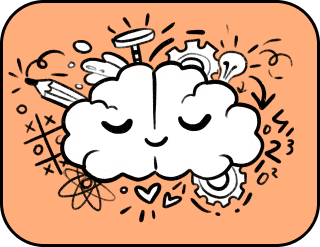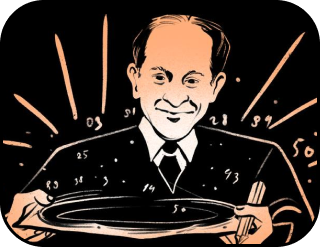The fashion for food: When eating became a trend
“Food is a necessity, but sensible eating is an art.”
François de La Rochefoucauld
At the beginning of the 20th century, we decided that all food boils down to three basic substances. Later, we realised that it’s not that simple: proteins, fats, and carbohydrates are not the whole story.
“Fine,” we said. “Let’s add vitamins. Now we’ve got it all!”
But no, that wasn’t everything. By the 21st century, foods with prefixes like “bio” and “eco” emerged. In contrast, we saw the rise of GMOs, and consequently, newfangled culinary trends appeared — raw foodism, breatharianism, and vegetarianism.
“Stop being fancy,” nature tells us. “Just eat what you’ve always eaten, and everything will be fine.”
But we rarely listen to nature and often follow trends instead: we invent thousands of products, from fructose syrup to liquid smoke, gain weight as if on yeast, and spend millions trying to figure out which molecule went wrong.
The trend of dubious naturalness
“Eco,” “Bio,” “Organic” — these are magical labels that can convince consumers to pay 20-50% more and believe that such products are bound to be safe, healthy, and natural. Yet, more often than not, these enticing marketing terms provide little practical benefit to the consumer.
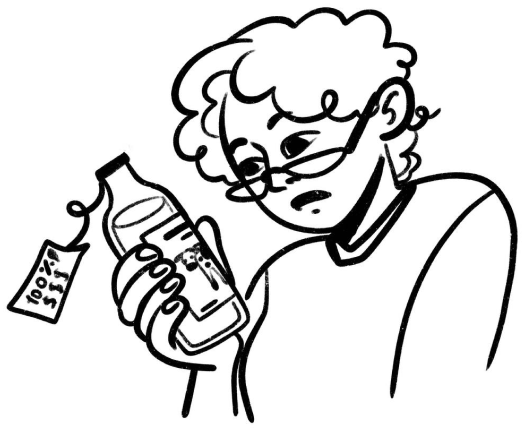
ECO
It’s widely believed that “ECO” means something is good for your health. However, the “eco” label on products actually refers to their environmental impact during production, transportation, storage, and disposal, not the quality of the product itself. It’s a kind of “green” certification that ensures measures were taken throughout the product’s lifecycle to minimise environmental harm.
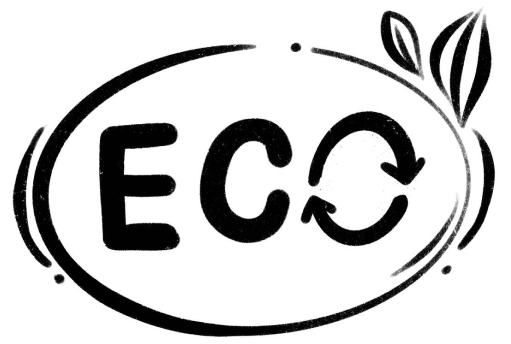
Of course, “eco” doesn’t guarantee that the product is entirely natural or safe for health, but this label offers certain assurances to the consumer, indicating that the product’s entire lifecycle was designed with ecological standards in mind.
Let’s assume “eco” is an important step towards more sustainable and “green” production. But what about plastic bottles that proudly display those three eco-friendly letters? Will eco-friendly plastic magically dissolve into thin air? Hardly. It will still take ages to decompose in the ground, and the price of the product in such a bottle will certainly be higher.
ORGANIC
Unlike the ecological label, the organic label guarantees that the product is safe for both the environment and your health. No GMOs, antibiotics, or radiation — just natural products grown using traditional methods.
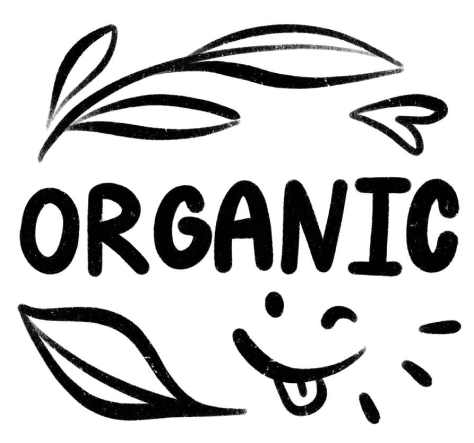
So, when choosing between “eco” and “organic,” remember: the former refers to care for the environment, while the latter is about your own well-being. Both options are worth considering, as we all ultimately depend on the delicate balance of our planet. It sounds beautiful, but we’ve already determined that attractive “healthy” labels don’t necessarily mean complete naturalness.
BIO
The prefix “BIO” can be found on a wide range of products — food, cosmetics, and household chemicals. If you consider that “BIO” means “life,” seeing this label on juice or breakfast cereal might indeed seem odd.
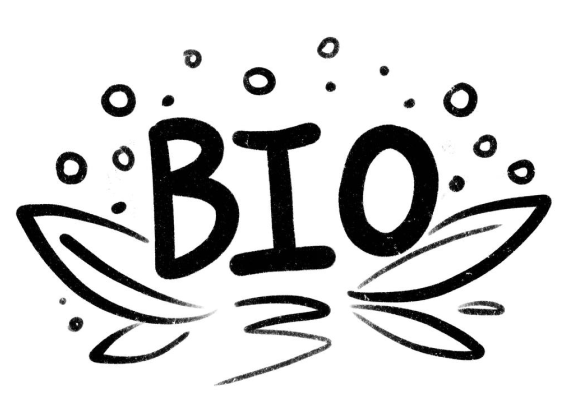
According to ANSI, “BIO” refers to milk-based products enriched with probiotics. Everything else is simply the imagination of manufacturers, not grounded in any clear criteria.
Only dairy products enriched with beneficial microorganisms or special substances that stimulate the body’s natural flora can be labeled “BIO.” Any other use of this term is nonsensical.
NATURAL
Compared to the previous terms, the prefix “natural” is an especially slippery concept. There is no established legal framework to refer to when it comes to this label.

There are no clear criteria for “naturalness” in regulations and standards, so the use of this label is entirely at the discretion of the producer. Moreover, the naturalness of a product does not guarantee its usefulness or safety for health.
Skimmed milk can be considered less natural than whole milk straight from the cow. Similarly, it’s unlikely that food products containing various preservatives, flavourings, or taste enhancers can be legitimately called “natural.” Yet, these ingredients are found in almost all modern foods.
The GMO trend
In 1972, American scientist Paul Berg made a revolutionary breakthrough by combining two foreign genes for the first time. But there was no celebration in the scientific community; instead, there was a wave of publications warning about the dangers of GMO plants for humans, and the project was frozen.
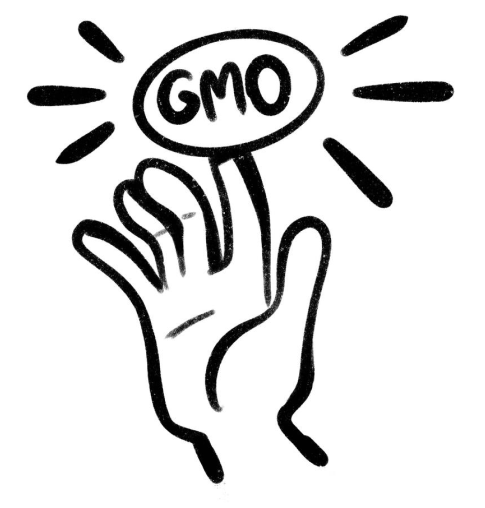
It wasn’t until four years later that the government revisited the issue of introducing GMOs into agriculture. Meanwhile, Herbert Boyer used a GMO product to create insulin, saving the lives of patients with diabetes. In 1992, insect-resistant tobacco appeared in China, and by 1994, a revolutionary transgenic tomato was already making its mark on the market.
This was followed by GMO soybeans, corn, cotton, canola, potatoes, rice, and many other crops. By 2014, GMO plants occupied 20% of all global farmland, with the U.S., Argentina, Canada, China, and India leading in production and export.
On the one hand, GMOs are a powerful tool in the fight against hunger and enhance global food security. On the other hand, there are concerns about their long-term impact on human health and the environment.
Interestingly, the prevalence of GMO products varies significantly across different regions of the world: Europe takes a more cautious approach and maintains certain restrictions, while North America has almost completely opened its markets to GMOs.
The U.S. is attempting to impose a similar approach on Europe through the Transatlantic Trade and Investment Partnership. The issue of GMOs is becoming a geopolitical and economic challenge, affecting the interests of large corporations, governments, and consumers worldwide, and not merely a health concern.
The other side of GMOs
Biologists claim that genetically modified plants are more environmentally friendly than their non-modified counterparts. This raises the question: why are people afraid of GMOs? The reasons are clear.
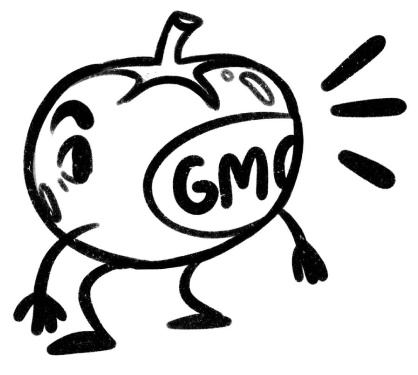
In the late 1980s, a genetically modified bacterium was created in the U.S. to produce the food supplement tryptophan. However, for reasons still not fully understood, along with regular tryptophan, the bacterium began producing ethylene-bis-tryptophan. As a result of consuming this, 5,000 people fell ill, 37 died, and 1,500 were left disabled.
Advocates from certain interest groups argue that the so-called “GMO problem” is nothing more than mass hysteria, fuelled by dishonest media and pseudo-experts.
Or perhaps all this hysteria around GMOs is just a way to profit from people’s fears?
Scientists don’t want to share negative research
The main defenders of GMOs are often biotechnologists who receive research grants from multinational companies that produce GMOs. However, none of them have ever tested the effects of GMOs on animals or humans. Experimentally, it has been proven that genetically modified products can indeed lead to internal organ pathologies, allergies, cancer, and even infertility.

Yet, the scientific community continues to distance itself from the issue, and it’s often public opinion that rejects genetic engineering.
On a basic level, GMO products have existed for as long as humans have. Instead of directly interfering with the genome of an organism, our ancestors used selective breeding.
Domestication of animals, breeding livestock with artificial reproductive restrictions, increasing the population of species with human-friendly traits, and plant selection — these were the first controlled genetic modifications in our history.
However, there’s a significant difference: with selective breeding, related organisms are crossed, while creating GMOs involves using special technologies to insert a gene from any organism into the genome of a plant. This process is impossible in nature and, therefore, has consequences.
For example, the “Lenape” and “Magnum Bonum” varieties of potatoes were developed through selective breeding, but harmful mutations occurred as a result. This was only discovered after the potatoes reached consumers. The harmless potato began producing solanine — a toxic glycoalkaloid that can suppress the nervous system, accumulate in the body, and act as a food toxin.
Does consuming genetically modified foods change the human genetic code?
When discussing this, we’re often referred back to a basic anatomy textbook. Our body is like a “furnace” where the “logs” of food are “burned.” In simpler terms, food is processed and broken down into its simplest components. Moreover, the very structure of our cells is designed to resist foreign DNA introduced from the outside; otherwise, we would literally become what we eat.

Our body is well protected from such “invasions” and is capable of processing any food that enters it. So, provocative slogans like “Buy GMO-free” or “Only buy eco-verified products” are unlikely to satisfy us. The issue is deeper than that. Especially considering that there are indeed negative examples.
Where is the real danger?
According to biologists, GMO organisms are simply the result of selective breeding — just at a higher technological level, compared to predecessors that were purposefully bred by humans for hundreds of years. However, as it turns out, by enhancing certain traits of a product, experimenters sometimes deprive it of its familiar characteristics: more often, taste and the familiar aromas associated with certain products suffer.

For example, it’s hard not to notice that tomatoes now have thicker skins. The vegetable resembles a ball, as it doesn’t deform during transportation, shaking, or long-term storage. It could even serve as a defensive or offensive weapon — a hit from one of these round vegetables is sure to leave a bruise. This is just one minor danger of tomatoes — physical injury. But this is the least of the potential dangers that could arise from GMO experiments.
We can’t be sure how many genetically modified foods are appearing on our store shelves. Or can we?
Biologists from the Bioengineering Laboratory at Altai State University, working in the field of molecular genetics, have developed a portable GMO tester. It allows for the quick detection of genetically modified organisms in various products. The device is a small machine measuring 10×15 centimetres, equipped with a set of tests to detect specific genes, and weighs 350 grams. The analysis procedure takes about 50 minutes, but scientists promise that it will soon be halved.

The trend of artificial meat
“Let’s save humanity from hunger by eradicating agriculture.” A strange slogan that is becoming increasingly visible in the actions of governments in many developed countries. Multinational corporations are promoting the idea of saving humanity from hunger with the help of GMOs. Yet paradoxically, this is happening while the fight against natural farming and livestock breeding continues.

These are being systematically eradicated everywhere. Meanwhile, stores are flooded with dozens of varieties of sausages, cheeses, and dairy products. Where do they come from?
The genetic revolution is currently happening mainly in the wealthiest countries, which are already abundantly supplied with food. It’s driven not by necessity or hunger but by the pursuit of exclusive rights and commercial profit.
It will take many more years before the fruits of new discoveries in genetic engineering and biotechnological projects begin to serve the public good, instead of undermining local economies and introducing various risks.
For better or worse, the most tested and safest fruits and vegetables still come from your own garden. There’s no “bio” or “GMO-free” label — everything is clear as it is.
The trend of food without food
Food no longer surprises anyone. Maybe it’s time to transition to living without food altogether? After all, humanity has already entered a new stage of development, learning to sustain itself on tree leaves and sunlight.
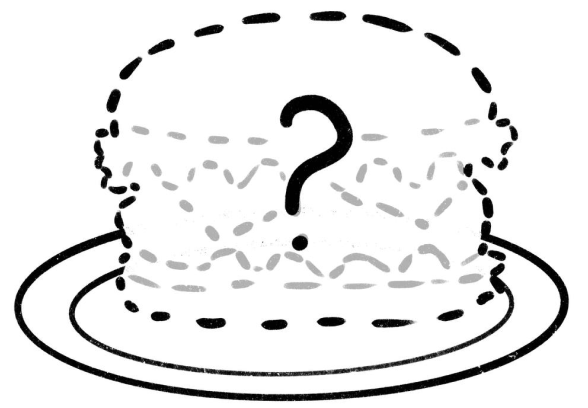
Many of these unconventional ways of nourishing oneself, such as breatharianism, raw food diets, and other dietary experiments, have intriguing backstories. However, there are also victims of these “healthy” obsessions when taken to extremes.
Vegetarians vs. vegans
In today’s world, vegetarianism — a diet that excludes meat, poultry, fish, and seafood — is gaining increasing popularity. But vegetarianism is more than just a diet; it’s a lifestyle that seeks to minimise any exploitation and cruelty toward animals.
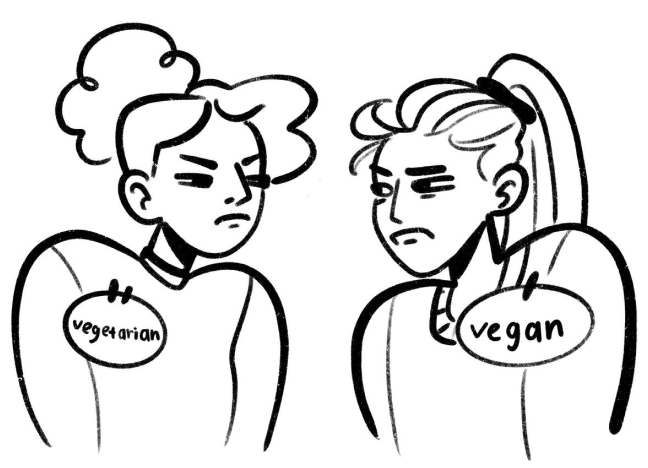
A stricter form of vegetarianism, veganism, goes even further. Vegans not only refuse to eat meat and seafood but also exclude all animal-derived products from their diet, including milk, eggs, and even honey.
However, WHO experts have listed a radical rejection of animal products as a behavioural disorder. They suggest that it’s not necessary to completely eliminate meat and dairy for good health — just avoid the fats contained in them. Two-thirds of a person’s diet should consist of plant-based foods. With this model, the cardiovascular system functions properly, potentially increasing lifespan.
Macrobiotics
According to macrobiotics, foods possess energies — yin and yang. Only in some foods these energies are in perfect balance. This philosophy draws inspiration from Zen Buddhism and owes its existence to George Ohsawa.
“Yin” foods — sugar, milk, and cooked fruits — create an acidic environment, while “yang”
foods — meat, fish, eggs, and cheese — are alkaline. The balance of these opposing energies is key to health and harmony.
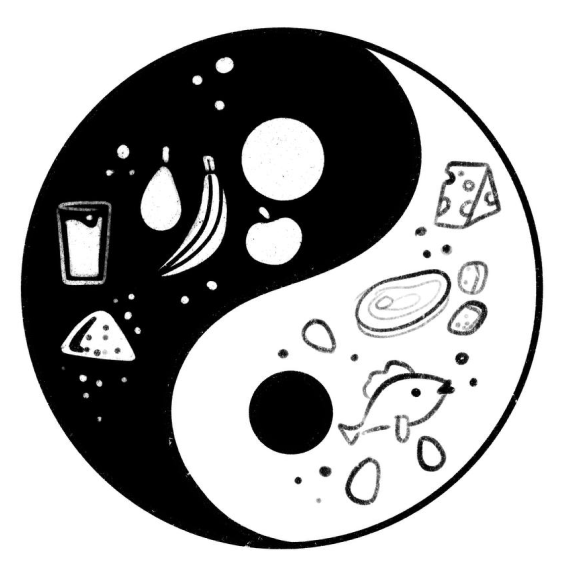
According to this philosophy, food can be categorised as male or female, seasonal (cucumbers in summer, hearty dishes in winter), or geographical. For instance, a northerner’s body might not respond well to pineapples and papaya, just as reindeer and cloudberries might puzzle an Indian or Uzbek.
Macrobiotics followers believe that a yin-yang diet can not only improve health but also grant strength, longevity, and even heal serious illnesses like cancer. However, scientific research has not provided convincing evidence to support these claims.
Macrobiotics is harmless if followed with moderation, but blindly committing to it may result in intestinal flora imbalances due to excess fibre, iron deficiency anaemia, a lack of protein, calcium, vitamins B12 and D, digestive issues, and allergies.
If doctors recommend eating more fish, meat, or other specific products to address vitamin deficiencies, is it worth remembering George Ohsawa’s teachings? Certainly not. The body’s needs should always take priority over pseudo-scientific teachings.
Raw food diet
The raw food diet also has deep roots. It first emerged in the 19th century when doctors and naturopaths began promoting the benefits of raw, unprocessed foods. Later, raw foodism developed within various health and dietary movements.
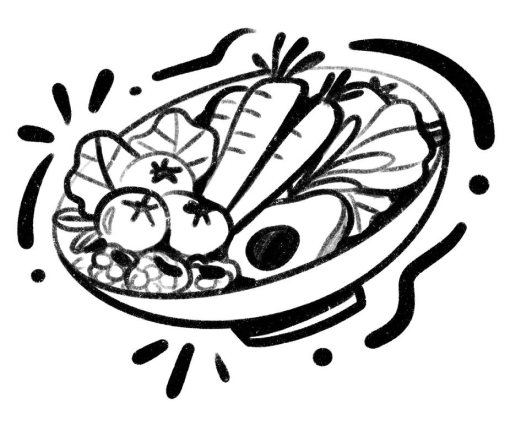
Followers of this system may consume raw eggs, raw beef, raw fish, and legumes. Raw food enthusiasts believe that cooking or frying foods causes them to lose their beneficial properties and nutrients. The most extreme raw foodists are convinced that once food is heat-treated, it becomes toxic.
Doctors warn that raw foodism is one of the most dangerous diets. Raw foodists deprive themselves of protein, iron, carbohydrates, all B vitamins, and many essential micronutrients. The consequences, including anaemia, heart disease, and nervous system issues, are not promising. In more severe cases, malnutrition manifests in much harsher forms and can lead to death.
Even children know that meat and fish products require proper heat treatment.
Breatharianism
Why not eliminate food altogether? That’s essentially the philosophy behind breatharianism.
Breatharianism as a movement originated in India and Tibet, where practitioners believed they could receive energy directly from the air and sunlight, forgoing regular food. Gradually, appetite decreases, and the body is said to shift to feeding on prana.
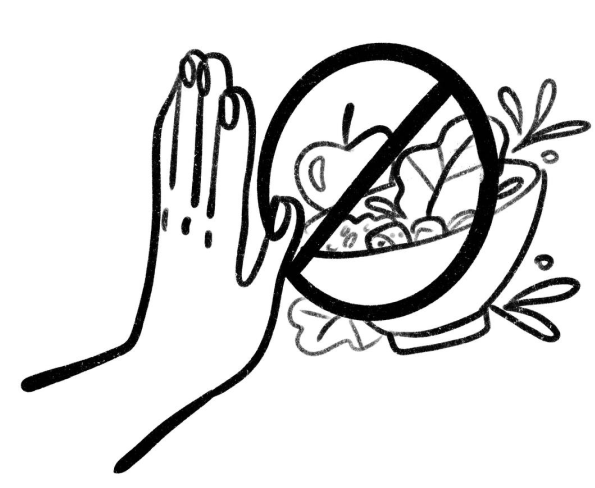
In India, breatharianism is combined with meditation and other practices, effectively reprogramming the brain and body. Breatharians don’t feed on sunlight energy per se; rather, they claim to be able to survive without the things that are essential to ordinary people.
Apart from semi-mythical accounts of hermits, saints, enlightened figures, yogis, and others who have supposedly reached a state where their lives can be sustained without consuming physical food, the phenomenon of breatharianism was virtually unknown until recently.
Sun eating
However, there are quite a few sun eaters on planet Earth — around 8,000 by various estimates — and these sun eaters claim that this phenomenon is linked to the planet transitioning into a new energetic state, which alters human capabilities on both spiritual and physical levels.

In recent decades, people have increasingly engaged in sun eating, despite the fact that mainstream science does not recognise it. For individuals born outside India, with different genetics, lifestyle, immune system, digestive tract, and so on, achieving such abilities is nearly impossible. The refusal to eat can lead to severe consequences.
Yes, the body has reserves, but they are not infinite. The body’s metabolic processes will fail, leading to collapse. The lack of “building material” forces the body to destroy itself: muscles, bones, heart, liver, and kidneys.
Questionable “sun treats”…
When will the trend for healthiness emerge?
So why are we being introduced to strange, sometimes even nonsensical dietary ideas and subtly encouraged to stop eating? What’s the deal? Is it that we have too few food resources and too many people? Is a healthy nation unwanted by anyone except ourselves?

The modern landscape is multifaceted and confusing. We are overwhelmed and choking on a flood of contradictory information, where everyone tries to promote their own views and interests. How can we discern what is genuinely beneficial from what is merely a ploy for profit?
Undoubtedly, new food production methods benefit scientists, corporations, and pharmaceutical companies. But the issue is also that both biological systems — food and eaters — are far more complex than we can even imagine today. Fashion is something ephemeral, existing only in our minds and not in reality. Whether to follow it or not is a personal choice. To the question of what we should eat, whether to stick to our usual eating habits or follow the latest diet, one might respond with the words of a clergy member: “The main thing is not to eat each other.”
While living organisms undergo translocation, deletion, and duplication, we offer scientific knowledge without mutations – only useful discoveries and theories.
Thank you!



